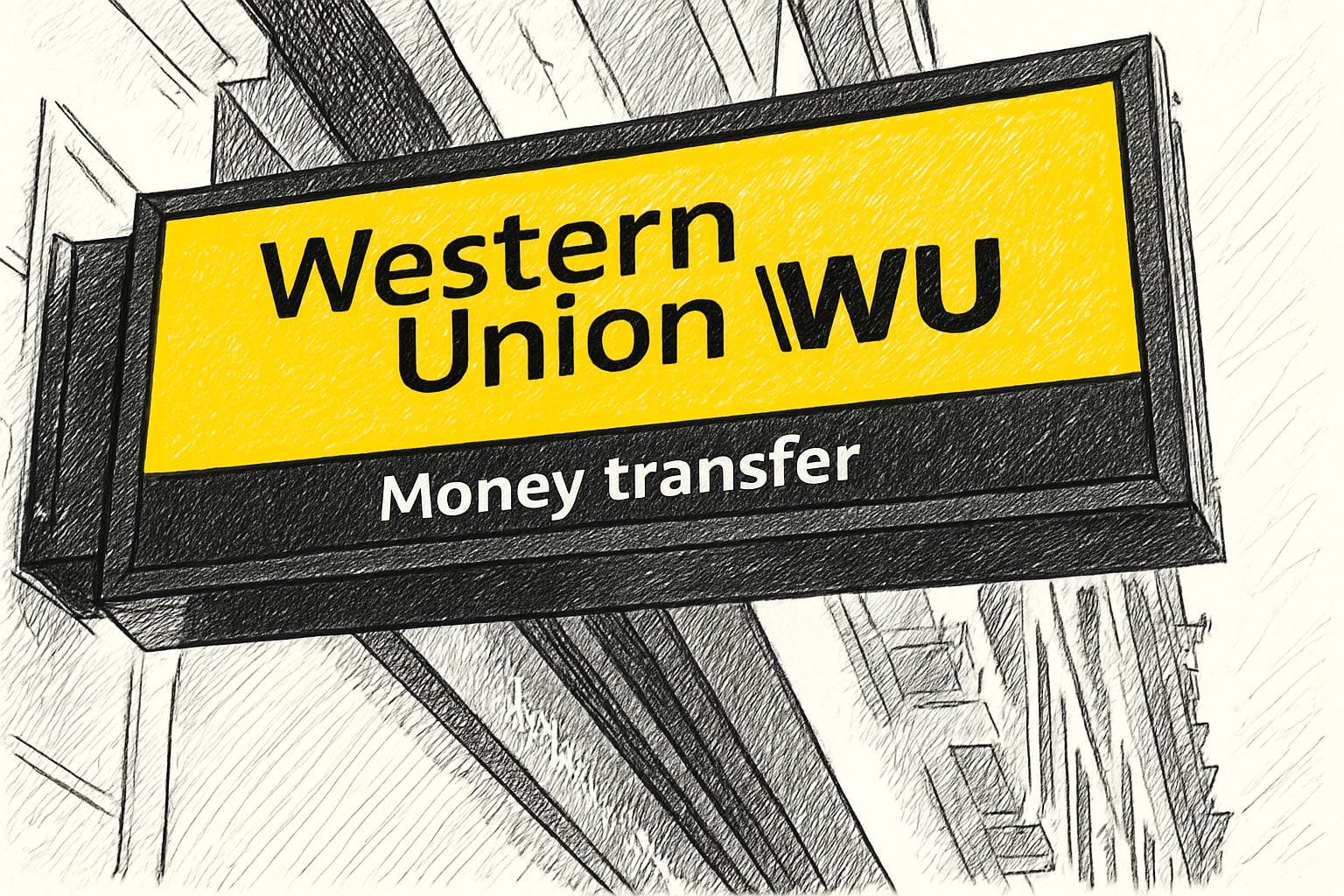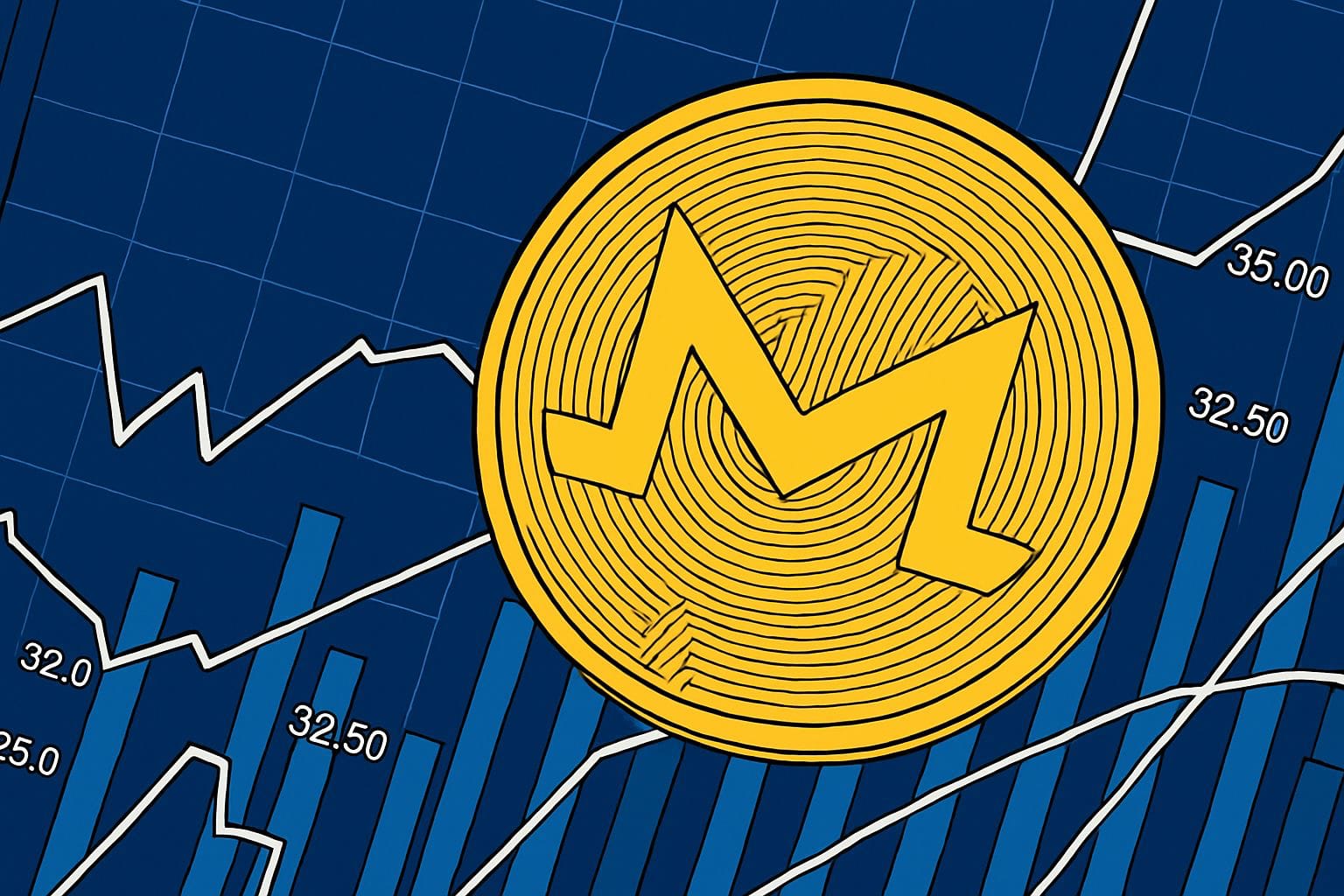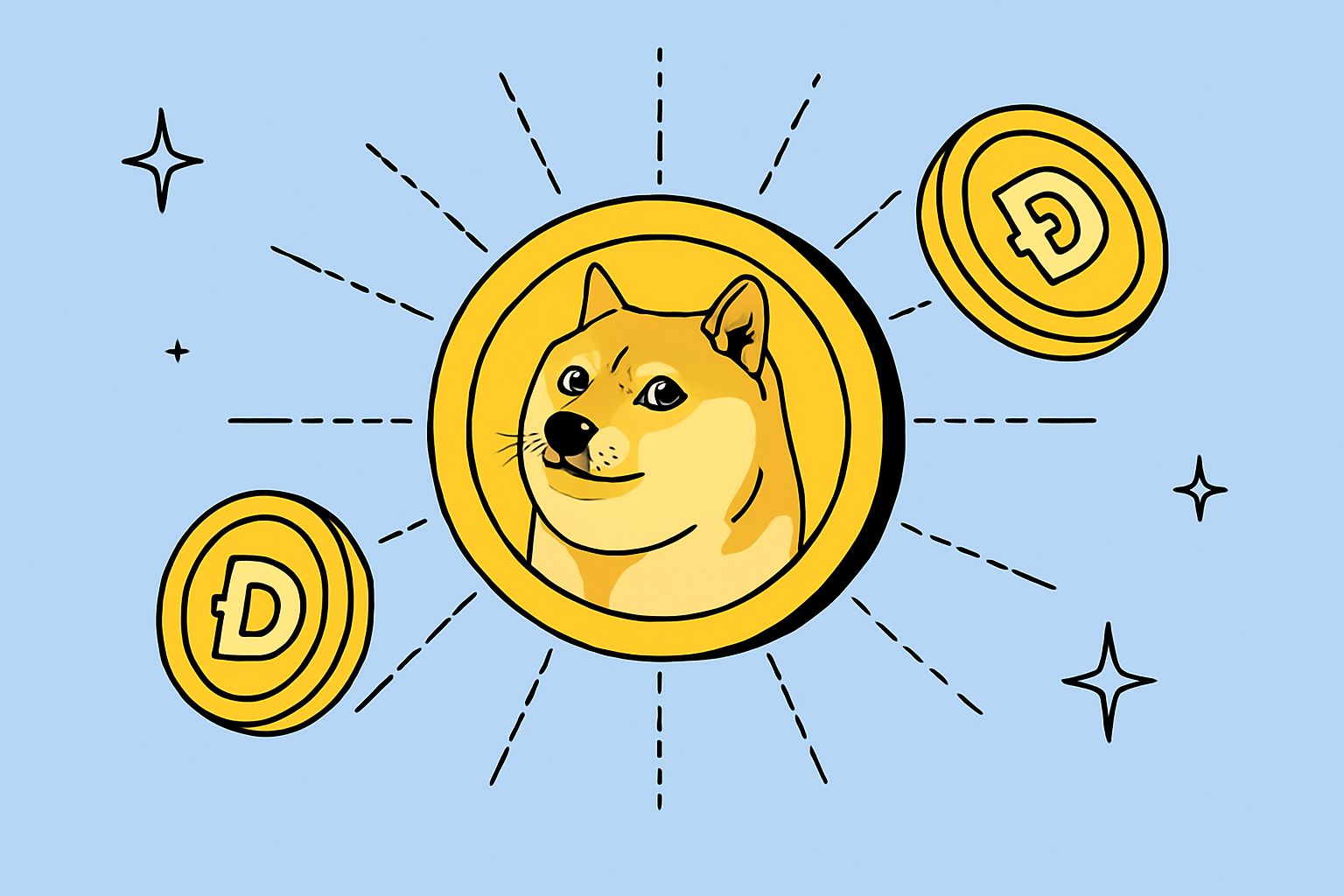4.5 Cryptocurrencies in Action

In recent years, cryptocurrencies have evolved from speculative assets to practical tools transforming various industries. From facilitating faster, cheaper cross-border payments to empowering individuals in oppressive regimes, digital currencies are reshaping how people interact with money, conduct business, and safeguard their financial privacy. In this section, we explore the diverse real-world applications of cryptocurrencies across sectors, showcasing how different types—from stablecoins and privacy coins to meme coins and decentralized finance tokens—are making a tangible impact on global economies and daily life.
1. Stablecoins: Facilitating Cross-Border Payments – Tether (USDT)

Stablecoins are cryptocurrencies designed to maintain a stable value by being pegged to traditional assets, such as fiat currencies like the US Dollar. Unlike other cryptocurrencies, such as Bitcoin or Ethereum, whose values can fluctuate significantly in a short time, stablecoins are intended to provide price stability. This stability makes them ideal for use cases where volatility is undesirable, particularly in remittances, savings, and cross-border transactions. Among the most widely used stablecoins is Tether (USDT), a digital asset that is pegged 1:1 to the US Dollar.
Platform: Tether (USDT) for Cross-Border Remittances
How it Works: Stablecoins like Tether (USDT) address one of the major drawbacks of traditional cryptocurrencies: volatility. The value of USDT is tied directly to the US Dollar, making it immune to the market swings that characterize other digital assets. This stability is especially crucial in financial transactions that require reliability, such as sending money across borders. In countries with high remittance inflows, such as the Philippines, Tether provides an ideal alternative to legacy remittance services like Western Union or MoneyGram, which are notorious for their high fees and slow processing times.
The process of sending money using Tether is simple and can be done through various cryptocurrency exchanges or wallets that support USDT. When a migrant worker, for example, in the United States, wants to send funds home to the Philippines, they can convert their local currency into USDT, transfer the USDT to their family’s digital wallet, and the recipient can exchange it for local currency at a very low fee. This process is fast, transparent, and cost-efficient compared to traditional remittance methods, which often involve intermediaries, multiple steps, and hefty fees.

Real Impact: The real-world benefits of Tether (USDT) are particularly evident in countries where millions of families rely on remittances from abroad to support their livelihoods. For example, Maria, a Filipino migrant worker in the Middle East, has used Tether to send money back to her family in the Philippines. In the past, Maria relied on traditional money transfer services like Western Union, which often charged a significant fee—sometimes up to 10% of the total amount she was sending. Moreover, the exchange rates used by these services could be unfavorable, further diminishing the value of the remittance.
By switching to Tether (USDT), Maria is able to bypass these high fees and exchange rate discrepancies. The transfer is completed within minutes, as opposed to the days it would take through traditional banks or remittance services. More importantly, the transaction fees for sending USDT are negligible compared to the costs associated with traditional services. For example, while a typical $500 transfer might cost Maria $50–$70 in fees through services like Western Union, sending the same amount in Tether might cost her just a few cents, depending on the platform used. This means that Maria is able to send more of her income directly to her family, which can be crucial for families living in regions with limited access to traditional banking services or in economies experiencing inflation.
Beyond Maria, the impact of Tether and other stablecoins can be seen across the broader Philippines and other countries reliant on remittances. According to the World Bank, remittances to low- and middle-income countries reached over $540 billion in 2020, and this volume is expected to continue growing. By facilitating faster, cheaper, and more secure cross-border payments, Tether is playing a role in improving the financial inclusion of individuals who might otherwise be excluded from the traditional banking system.
Tether's use in remittances also reduces the risks associated with fluctuating exchange rates. In countries like the Philippines, where inflation can erode the value of local currency, Tether ensures that the value of the remittance remains consistent and stable, preserving the purchasing power of the funds sent home.
Expanding Use Cases for Tether: Beyond remittances, Tether is also gaining traction in global trade and e-commerce. As an increasingly common form of payment in online transactions, Tether allows businesses to accept payments from international customers without worrying about the volatility of other cryptocurrencies or the complexities of foreign exchange. This is especially valuable for small businesses in emerging markets that might otherwise face difficulties managing fluctuating currencies or dealing with high fees from traditional payment processors.
Additionally, Tether is being used in DeFi (Decentralized Finance) applications as a stable asset for lending, borrowing, and yield farming, further expanding its role in the digital economy. Tether’s liquidity and stability have made it a cornerstone of decentralized platforms that require a stable unit of value for transactions.
2. Privacy Coins: Protecting Personal Data – Monero (XMR)

Privacy coins like Monero (XMR) are designed to offer users enhanced privacy and anonymity by obscuring transaction details such as sender and receiver addresses, transaction amounts, and the timing of the transaction. Unlike many other cryptocurrencies, which offer a level of pseudonymity, Monero is built specifically to be fully private and untraceable, utilizing advanced cryptographic techniques to ensure that all aspects of a transaction remain confidential. This has made Monero a critical tool for individuals who value their financial privacy or live in regions where privacy is under threat.
Platform: Monero for Private Transactions
How it Works: Monero utilizes several unique technologies to guarantee complete privacy in transactions. The key features include:
- Ring Signatures: These signatures mix a user's transaction with others on the network, so that it is impossible to determine which one is the actual sender. This makes each transaction look like it was signed by a group, ensuring the identity of the user remains hidden.
- Stealth Addresses: Monero generates a one-time address for each transaction, preventing any outside party from linking multiple transactions to a single user or wallet. Even if someone can access the blockchain, they cannot trace the transaction back to the sender or receiver.
- RingCT (Ring Confidential Transactions): This protocol hides the transaction amounts, ensuring that the value being transferred remains confidential.
These features combine to create a level of privacy that is far superior to most other cryptocurrencies, including Bitcoin, where transaction details are transparent on the public ledger.
Real Impact: Monero’s privacy features are particularly valuable in regions where financial privacy is not only desirable but necessary. For individuals in countries with oppressive regimes or under economic duress, Monero provides a way to transact and store wealth without fear of government surveillance, hacking, or other forms of tracking. One of the most notable examples of Monero’s use in such a context is Venezuela, where hyperinflation and government oversight of financial transactions have prompted many citizens to seek alternatives to traditional banking systems.
In Venezuela, where the government monitors transactions through the Chavismo regime’s centralized banking system, citizens are often subjected to state control over their financial activities. For example, Juan, a small business owner in Caracas, had long struggled with both inflation and financial censorship. The government’s strict controls over the local economy and foreign exchange made it difficult for Juan to access global markets or even protect his savings from devaluation. Traditional banking systems imposed limitations on his transactions, especially international payments, and the risk of censorship was ever-present.
To circumvent these issues, Juan began using Monero to conduct business transactions with international suppliers and customers. When Juan needed to send payments to suppliers in Europe or receive payments for services, he used Monero to keep the transaction completely private. The use of ring signatures ensured that his business dealings couldn’t be traced back to him by government authorities or hackers, protecting his financial autonomy. The stealth addresses further ensured that his communications with business partners remained private, shielding his customer base and his pricing structures from unwanted attention.
In addition to facilitating private business transactions, Monero has become essential for personal savings in Venezuela. As the value of the Venezuelan bolívar continues to plummet, Monero offers a store of value that is protected from hyperinflation. Juan has used Monero to safeguard his wealth, confident that his assets will not be devalued by the government’s economic policies.
This use case highlights the critical role of privacy coins like Monero in regions where government control over financial transactions can stifle economic activity, restrict access to the global economy, and infringe on personal freedoms. Monero’s ability to offer financial autonomy in such environments not only protects the individual but also fosters economic resilience in situations where traditional systems have failed.
Privacy Beyond Borders: Monero’s use extends beyond oppressive regimes. In countries like Russia and China, where financial censorship and surveillance are significant concerns, Monero has become a tool for maintaining financial freedom. Activists, journalists, and anyone concerned with financial privacy have turned to Monero as a shield against unwanted surveillance, whether from governments, hackers, or other third parties.
By enabling uncensorable, private transactions, Monero empowers individuals to protect their personal and financial data. It has emerged as a vital resource for those living under authoritarian regimes, but it also appeals to privacy-conscious individuals around the world—demonstrating the growing demand for privacy-centric solutions in an increasingly surveilled society.
As privacy concerns continue to grow globally, Monero’s role in the future of financial freedom will likely become even more significant.
3. Central Bank Digital Currencies (CBDCs): Digital National Currency – Sand Dollar (Bahamas)

Central Bank Digital Currencies (CBDCs) represent the digital version of a country’s official currency, issued and regulated by its central bank. These digital currencies aim to combine the benefits of traditional fiat currencies—such as government backing and monetary policy control—with the advantages of digital transactions, such as enhanced speed, efficiency, and accessibility. While they maintain government oversight, CBDCs can provide more secure and instantaneous payment solutions, enabling financial inclusion and economic growth in ways that traditional banking systems may struggle to reach.
Platform: Sand Dollar in the Bahamas
How it Works: The Sand Dollar is the first fully deployed CBDC in the world, issued by the Central Bank of The Bahamas (CBOB). It is designed to be a digital counterpart to the Bahamian Dollar (BSD) and operates within the existing monetary system. The Sand Dollar’s primary goal is to improve financial inclusion and enhance the efficiency of the country’s payment system, especially in a nation made up of over 700 islands, many of which are sparsely populated.
The Sand Dollar functions through a digital wallet app on smartphones, allowing Bahamians to make secure, instant payments for goods and services without needing to rely on traditional banking infrastructure. It can be used for everything from paying for groceries and utilities to transferring money between individuals. The digital currency is issued, monitored, and regulated by the CBOB, providing the government with the ability to control the supply and maintain the stability of the currency.
One key aspect of the Sand Dollar is that it operates in parallel with the physical Bahamian Dollar, allowing citizens to use both in tandem. Citizens can convert between digital and physical currencies freely, with Sand Dollars being redeemable for Bahamian Dollars at a 1:1 ratio. The government has also built a network of approved wallet providers, which enables both consumers and businesses to use the Sand Dollar seamlessly.
Real Impact: The Sand Dollar has made a significant impact in improving financial inclusion across the islands, particularly in remote and underserved areas. The Bahamas, being an archipelago with many islands that are difficult to reach and where physical bank branches are limited, has long struggled with providing accessible banking services to all its citizens. Traditional banks in such regions are often limited in their ability to support the population due to the challenges of geography and infrastructure.
For example, John, a small shopkeeper on the island of Exuma, is able to use the Sand Dollar to accept payments for his products directly through his smartphone. Before the introduction of the digital currency, John’s customers often had to pay with cash, or they faced long waits for bank transactions. This created significant delays and limited business efficiency. With the Sand Dollar, John can now receive payments instantly, even from customers who live in remote areas with limited access to physical banks or ATMs.
During the COVID-19 pandemic, the Sand Dollar’s role became even more critical. With lockdowns and social distancing measures in place, digital payments surged as consumers sought contactless methods to transact. The Sand Dollar provided an essential solution during this period, allowing residents to conduct business safely and efficiently while reducing the reliance on cash handling, which could pose health risks.
The Sand Dollar also provides the government with enhanced visibility over financial transactions. By digitizing payments, the Bahamian authorities can gain better control over the movement of money within the economy, helping to combat issues like money laundering and tax evasion. The digital trail of each Sand Dollar transaction makes it more difficult for illicit activities to go undetected, improving the country’s financial transparency and regulatory oversight.
Moreover, the introduction of the Sand Dollar contributes to the reduction of cash handling costs for businesses and the government, such as the expense of printing and distributing physical currency. By reducing these overheads, the Bahamian government can reinvest those savings into other areas of the economy, fostering overall economic growth.
A Model for Other Nations: The Bahamas' Sand Dollar serves as a potential model for other nations, particularly small island states or countries with large unbanked populations. Its success in fostering financial inclusion, enhancing efficiency, and improving transactional security could serve as a blueprint for the global rollout of CBDCs, especially in regions where traditional banking systems are hard to implement. The Sand Dollar showcases the potential of CBDCs to support both economic development and social welfare by making financial services accessible to everyone—regardless of geographic location.
4. Meme Coins: Building Communities – Dogecoin (DOGE)

Meme coins are cryptocurrencies that often begin as jokes or memes but grow in popularity due to their viral nature and community-driven momentum. Unlike more established cryptocurrencies like Bitcoin or Ethereum, meme coins generally lack technological advancements or unique use cases. Instead, their value is often driven by community engagement, celebrity endorsements, and social media buzz. Dogecoin (DOGE) stands as the most famous and influential example of this phenomenon.
Platform: Dogecoin for Community Engagement and Charitable Donations
How it Works: Dogecoin was created in 2013 by software engineers Billy Markus and Jackson Palmer as a playful response to the growing cryptocurrency boom. Inspired by the famous "Doge" meme featuring a Shiba Inu dog, Dogecoin started as a lighthearted and humorous project with no serious intentions of competing with Bitcoin or Ethereum. However, its low transaction fees and fast block generation times made it a useful tool for online tipping and microtransactions.
What sets Dogecoin apart is its highly engaged, enthusiastic community, which has helped fuel its growth. The Dogecoin community has embraced the cryptocurrency for its fun and approachable nature, using it to tip content creators on platforms like Reddit and Twitter, as well as raise funds for charitable causes. Despite not having the sophisticated technology behind other major cryptos, Dogecoin thrives on its inclusiveness and ability to rally people around social initiatives. Celebrity endorsements—particularly from figures like Elon Musk—have also played a pivotal role in propelling Dogecoin into the mainstream spotlight.
Real Impact: Dogecoin’s ability to unite a community for fun and purpose has turned it into a powerful tool for social good. In 2014, the Dogecoin community raised over $30,000 in Dogecoin to sponsor the Jamaican bobsled team for the Winter Olympics in Sochi. The fundraising campaign was an overwhelming success, demonstrating the power of a decentralized online community to come together and support a worthy cause. This event marked Dogecoin’s first major charitable initiative, and its impact resonated far beyond the cryptocurrency world.
More recently, in 2021, the Dogecoin community mobilized once again to fundraise for a charitable cause—this time raising significant funds for a children’s hospital in the United States. Through social media campaigns and online efforts, Dogecoin supporters donated large sums to the hospital, showcasing the coin’s potential as a tool for charitable giving. What’s unique about these efforts is that they were driven entirely by the community, without any central authority or organizational backing, underscoring the decentralized nature of the meme coin movement.
Dogecoin has also been used for crowdfunding campaigns, including raising funds to help build wells in developing countries and support animal rescue missions. By making cryptocurrency donations simple and accessible to a wide range of people, Dogecoin has effectively bridged the gap between online communities and social causes.
Dogecoin’s Legacy as a Meme Coin with Purpose
Although Dogecoin lacks the technical features or the high-profile backing of other cryptocurrencies, its widespread popularity and community-driven efforts reveal the untapped potential of meme coins. Dogecoin demonstrates that cryptocurrencies are not only about financial transactions but also about creating movements, connecting people globally, and driving positive social change.
Dogecoin’s social impact goes beyond just the fundraising efforts; it has helped introduce cryptocurrency to people who might have otherwise been intimidated or skeptical about the technology. It’s become a symbol of how digital currencies can foster a sense of belonging, while enabling financial transactions and charitable work in a fun, accessible way.
While some critics still view meme coins like Dogecoin as speculative and lacking inherent value, its role in building communities and supporting charitable causes cannot be denied. For many, Dogecoin represents the democratization of cryptocurrency—where the technology is used not just for financial gain, but as a platform for collective action, philanthropy, and social good.
5. Decentralized Finance (DeFi) Coins: MakerDAO (MKR)

DeFi coins like MakerDAO (MKR) are central to the growing decentralized finance ecosystem, which allows users to access financial services without relying on traditional banks or intermediaries. MakerDAO powers the creation of DAI, a decentralized stablecoin pegged to the US Dollar, offering stability in a volatile crypto market. Additionally, MKR serves as a governance token, providing holders with the power to vote on important protocol changes.
Platform: MakerDAO (MKR) for Collateralized Loans and Stablecoin Generation
How it Works: MakerDAO operates on the Ethereum blockchain and allows users to lock up cryptocurrency assets, such as Ethereum (ETH) or other approved tokens, as collateral in a smart contract. In return, they can mint DAI, a stablecoin that maintains a value close to 1 USD. This system enables users to access liquidity without selling their underlying assets. MKR is the governance token of the platform, and holders participate in voting on risk parameters, fees, collateral types, and other critical decisions that ensure the stability and functionality of the MakerDAO ecosystem.
When users lock collateral into the MakerDAO system, they create what is called a Collateralized Debt Position (CDP). In exchange for their collateral, they receive a loan in DAI. If the value of the collateral falls below a specific threshold, it can be liquidated to protect the system’s solvency. The flexibility of this system allows users to borrow against their cryptocurrency holdings while maintaining control over their assets.
Real Impact: In Argentina, where hyperinflation and currency devaluation have been long-standing issues, MakerDAO provides an alternative to the national currency and the traditional banking system. With the Argentine Peso losing significant value over the years, people have increasingly sought ways to preserve their wealth in more stable forms. MakerDAO's decentralized, stablecoin-based lending and borrowing system presents a way for individuals and businesses to hedge against inflation and access liquidity without relying on unreliable financial institutions.
For example, Lucas, a tech entrepreneur in Buenos Aires, had been struggling to manage his cash flow due to the volatility of the Argentine Peso. When he needed funds to expand his business, he was unable to secure a loan from local banks because of high interest rates and restrictive collateral requirements. Instead, Lucas turned to MakerDAO.
Using his Ethereum (ETH) holdings, Lucas created a Collateralized Debt Position (CDP) on the MakerDAO platform, locking up his ETH as collateral. In exchange, he minted DAI, which he used to purchase the equipment and materials he needed for his business. By borrowing in DAI, Lucas avoided the risks of holding Argentine Pesos, which were losing value daily due to inflation. Additionally, the decentralized nature of MakerDAO allowed Lucas to maintain full control over his funds without intermediaries.
Unlike traditional loans, the interest rate in MakerDAO is determined by the system’s protocol, making it more predictable and often lower than conventional bank loans. This transparency and stability allowed Lucas to manage his business’s finances with greater confidence. Furthermore, by using DAI, Lucas was able to minimize his exposure to the volatility of cryptocurrencies, as DAI’s value is pegged to the US Dollar.
Long-Term Benefits for Argentina: The impact of MakerDAO and its stablecoin DAI in Argentina has been significant, particularly for small businesses and individuals in the crypto space. The ability to access liquidity in a stablecoin like DAI offers a safe haven from local currency depreciation and provides an alternative to traditional banking services, which many in rural or underserved areas may not have access to. Additionally, the decentralized nature of MakerDAO means that users are not subject to the restrictions or inflationary pressures of the traditional financial system.
Moreover, the MKR governance token plays a vital role in ensuring that the MakerDAO system remains stable. With MKR holders voting on critical decisions—such as which assets can be used as collateral, or what the stability fees should be—users in Argentina, and globally, can have a say in the platform’s evolution, making it more adaptive to changing economic conditions.
Conclusion
Cryptocurrencies are no longer just an abstract concept—they are actively reshaping industries and solving real-world problems. From stablecoins offering financial stability in volatile markets to privacy coins ensuring anonymity in sensitive transactions, and decentralized finance platforms enabling greater access to financial services, these digital assets are transforming the way people interact with money. Whether through government-backed digital currencies like CBDCs or community-driven tokens like meme coins, cryptocurrencies are empowering individuals, businesses, and entire nations to create more efficient, transparent, and inclusive systems. As the adoption of these technologies continues to grow, their impact will only become more profound, paving the way for a future where decentralized finance and digital currencies play an integral role in the global economy.
As we've seen, cryptocurrencies are more than just digital coins—they power real-world applications, drive innovation, and are reshaping how value moves globally. Now that you’ve explored the key types of cryptocurrencies and how they function in practice, let’s wrap up with a final look at what it all means—and where the future might take us.

